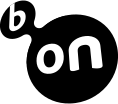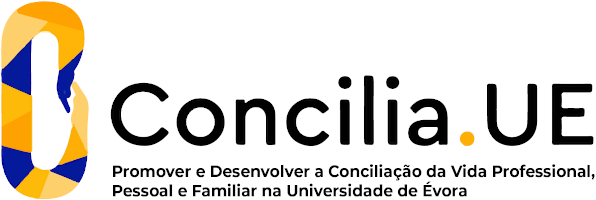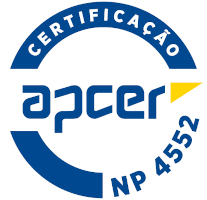2025
Physiology and exercise prescription for older adults
Name: Physiology and exercise prescription for older adults
Code: DES14863M
3 ECTS
Duration: 15 weeks/78 hours
Scientific Area:
Human Kinetics
Teaching languages: Portuguese
Languages of tutoring support: Portuguese, English
Regime de Frequência: Presencial
Sustainable Development Goals
Learning Goals
Knowledge
1. To understand the bio-psycho-social repercussions of ageing
2. Comprehend the physiology of ageing and its implications for exercise prescription
3. Understand the relationship between physical fitness and functional capacity in older adults and the respective moderating and mediating factors
4. Know the exercise recommendations for optimal ageing, maintenance of functional capacity and specific syndromes (e.g. frailty, cognitive impairment)
5. Know the tests available to assess the functional status of older adults
Skills and Competences
1. Plan exercise according to the objectives pursued, e.g. primary prevention, improvement of physical fitness or treatment of disease
2. Be able to individualize exercise and control its effects
3. Plan appropriate exercises for the main components (e.g. walking, strength, aerobic, balance, dual-tasking)
4. Select and apply functional assessment tests/protocols and use the information to prescribe exercise for older adults
1. To understand the bio-psycho-social repercussions of ageing
2. Comprehend the physiology of ageing and its implications for exercise prescription
3. Understand the relationship between physical fitness and functional capacity in older adults and the respective moderating and mediating factors
4. Know the exercise recommendations for optimal ageing, maintenance of functional capacity and specific syndromes (e.g. frailty, cognitive impairment)
5. Know the tests available to assess the functional status of older adults
Skills and Competences
1. Plan exercise according to the objectives pursued, e.g. primary prevention, improvement of physical fitness or treatment of disease
2. Be able to individualize exercise and control its effects
3. Plan appropriate exercises for the main components (e.g. walking, strength, aerobic, balance, dual-tasking)
4. Select and apply functional assessment tests/protocols and use the information to prescribe exercise for older adults
Contents
1.Physiological systems, age-related changes and the role of physical activity
-Cardiovascular system
-Metabolic system
-Nervous system
-Sensory systems
-Endocrine system
2.Diseases, syndromes and physical activity
-Diabetes and other metabolic diseases
-Osteoporosis
-Osteoarthritis
-Mental health
-Frailty and sarcopenia
-Falls
3.Healthy and unhealthy ageing phenotypes and influencing factors
4.Physical fitness, functional capacity and healthy ageing
5.Physical activity and exercise recommendations for older people
6.Training-specific exercise modalities
-Aerobic fitness
-Strength
-Balance
-Walking and mobility
-Multi-component training
-Dual-tasking
7.Inter-individual variability and heterogeneity of dose-response to exercise
-Intervention in the community and residential facilities
-Recommendations for frail older people
8.Physical and motor assessment
9.Adherence to exercise and safety measures
-Cardiovascular system
-Metabolic system
-Nervous system
-Sensory systems
-Endocrine system
2.Diseases, syndromes and physical activity
-Diabetes and other metabolic diseases
-Osteoporosis
-Osteoarthritis
-Mental health
-Frailty and sarcopenia
-Falls
3.Healthy and unhealthy ageing phenotypes and influencing factors
4.Physical fitness, functional capacity and healthy ageing
5.Physical activity and exercise recommendations for older people
6.Training-specific exercise modalities
-Aerobic fitness
-Strength
-Balance
-Walking and mobility
-Multi-component training
-Dual-tasking
7.Inter-individual variability and heterogeneity of dose-response to exercise
-Intervention in the community and residential facilities
-Recommendations for frail older people
8.Physical and motor assessment
9.Adherence to exercise and safety measures
Teaching Methods
Student-centred teaching model, with active strategies in pedagogical practices, making implicit the relationship between the curriculum and its applicability to real problems. The following strategies stand out:
-design of application and comprehension exercises, case studies, debates, watching video documentaries
-articulation between speaking moments and audiovisual resources that facilitate comprehension, attention and involve active student participation
-use of interactive digital resources, including the Moodle platform and collaborative software (e.g., google sheets and Padlet).
-collaborative approach based on team-based learning to analyse/discuss various significant cases, culminating with an individualized exercise prescription.
-articulation between teaching and research, publicizing R&D projects and encouraging student participation in them
-situated learning by carrying out application work with older adults in the community and/or in a residential context
-design of application and comprehension exercises, case studies, debates, watching video documentaries
-articulation between speaking moments and audiovisual resources that facilitate comprehension, attention and involve active student participation
-use of interactive digital resources, including the Moodle platform and collaborative software (e.g., google sheets and Padlet).
-collaborative approach based on team-based learning to analyse/discuss various significant cases, culminating with an individualized exercise prescription.
-articulation between teaching and research, publicizing R&D projects and encouraging student participation in them
-situated learning by carrying out application work with older adults in the community and/or in a residential context
Assessment
Assessment (continuous or final exam)
>50% test
>50% application work
-Test. Focuses on the content taught, for example, proposals for assessing the functional state of older adults, exercise proposals for specific cases and reflective and critical essays regarding the lessons themselves.
-Application work. Planning an exercise session (30-40 min) for older adults, which includes the components of cardiorespiratory fitness, strength, balance, flexibility, walking, agility and dual-tasking. All components include standing and chair exercises. The work consists of the recording of a video with the dynamization (buy the students) of an exercise session with older adults; this session is preceded by a moment of collaborative learning in class, in which the exercise session is presented, practiced, and debated by the students (and teacher), and can then be adjusted.
The application work is carried out in groups (preferably two students) in the continuous assessment phase and by one stude
>50% test
>50% application work
-Test. Focuses on the content taught, for example, proposals for assessing the functional state of older adults, exercise proposals for specific cases and reflective and critical essays regarding the lessons themselves.
-Application work. Planning an exercise session (30-40 min) for older adults, which includes the components of cardiorespiratory fitness, strength, balance, flexibility, walking, agility and dual-tasking. All components include standing and chair exercises. The work consists of the recording of a video with the dynamization (buy the students) of an exercise session with older adults; this session is preceded by a moment of collaborative learning in class, in which the exercise session is presented, practiced, and debated by the students (and teacher), and can then be adjusted.
The application work is carried out in groups (preferably two students) in the continuous assessment phase and by one stude
Teaching Staff
- José Francisco Filipe Marmeleira [responsible]





















